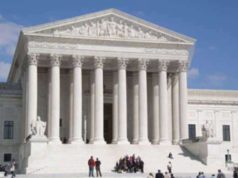Table of Contents

Introduction
The United States Congress is the legislative branch of the federal government, consisting of two houses: the Senate and the House of Representatives. Members of Congress are elected by the people of each state, and they serve as the voice of the people in making and passing laws. The means of appointment and voting process in Congress are critical to understanding how the American political system operates and how laws are made. This article will provide an overview of the appointment and voting process in Congress.
Appointment Process
Members of Congress are appointed through a democratic process. Representatives are elected to two-year terms by the people of their congressional district, while senators are elected to six-year terms by the people of their state. Each state is represented by two senators, regardless of its size or population.
The election process for members of Congress varies depending on the state and the level of government. In many cases, candidates must first win a primary election within their own party before they can compete in the general election. In primary elections, voters from each political party choose their preferred candidate for their party’s nomination. The winner of the primary election becomes the party’s official candidate in the general election, where they compete against candidates from other parties.
Voters in each congressional district and in each state cast their vote for their preferred candidate in the general election. Members of Congress are appointed to represent the interests of their constituents and to work on behalf of their district or state in the federal government.
Voting Process in Congress
The voting process in Congress is a critical part of the legislative process. Members of Congress use their vote to support or reject proposed laws and policies. This process can be complex and is subject to a wide range of factors, including political affiliations, personal beliefs, and constituent opinions.
In both the Senate and the House of Representatives, votes are conducted in person and recorded by electronic and written methods. Members of Congress can vote in three ways: “yea” (in favor), “nay” (against), or “abstain” (refrain from voting). In the House of Representatives, a simple majority vote is required to pass legislation, while in the Senate, a three-fifths supermajority vote is required for some bills.
The voting process in Congress is not always straightforward. Political parties, for example, sometimes use voting tools such as whip counts and voting blocs to ensure that their members vote in a unified manner. Members of Congress often also use their voting power strategically, seeking to influence or advance particular policies or interests.
The Voting Process in the House of Representatives
The voting process in the House of Representatives is relatively straightforward. For most legislation, a simple majority of the representatives present and voting is required for the bill to pass. In other words, if 218 representatives vote in favor of a bill and only 217 vote against it, the bill would pass.
Before voting occurs, representatives may debate the bill on the House floor. This debate can continue for as long as the majority of representatives continue to speak. The House also has rules that govern debate, such as limiting the amount of time a representative can speak and granting more speaking time to members of the majority party.
Once debate on the bill has concluded, the Speaker of the House will announce the time and manner of the final vote. Representatives will then vote on the bill using an electronic voting system. The vote is recorded and can be viewed by the public on the House website.
Another important aspect of the voting process in the House is the use of committees. Committees are specialized groups of representatives responsible for reviewing and assessing legislation in a specific area, such as the environment or education. Committees typically have the responsibility of deciding whether or not a bill should move to the House floor for a final vote. Committees also recommend changes to the bill, if necessary, before it is sent to the full House for consideration.
The Voting Process in the Senate
The voting process in the Senate is more complex than in the House. To pass most legislation, the Senate requires a supermajority of three-fifths of the senators present. This means that if all 100 senators are present, 60 senators must vote in favor of the legislation for it to pass.
Debate and the consideration of amendments are often intense in the Senate. Senators can speak for as long as they wish and can use various tactics to delay or obstruct a bill’s progress. For example, they may use filibusters to filibuster, blocking progress on legislation. Filibusters allow senators to speak on the Senate floor for an unlimited amount of time, effectively delaying the legislative process. To end a filibuster, a cloture vote must be conducted, requiring a three-fifths majority vote.
The use of committees in the Senate also differs from the House. The committees in the Senate are often smaller and have a more influential role in determining legislation. They have the power to amend and modify bills before they go to the full Senate for consideration. As with the House, committees can also delay or prevent bills from moving forward.
Conclusion
The appointment and voting process in the United States Congress is essential to the functioning of the federal government. Members of Congress are elected democratically, and their role is to represent the interests of their constituents in making and passing laws. The voting process in the House of Representatives and the Senate is complex and subject to a variety of factors, including political affiliations, personal beliefs, and constituent opinions. Understanding these processes is critical to understanding how laws are made in the United States and how the political system operates.
The selection and approval of Supreme Court nominees are intended to provide for the oversight of the institution as a whole by the other main branches of the Federal Government. The President makes the initial nomination of a possible replacement for vacancies in the Supreme Court as a whole or the office of the Chief Justice, after which procedures are provided for Congress to approve or reject the Supreme Court nominees.
Until fairly recently in American history, the process of appointing and voting in Supreme Court nominees was not considered an aspect of the Government’s operations likely to cause dissension, and as such, tended to occur quite quickly and without much supervision. The American scene of the preceding few decades, however, has seen an increasingly politicized atmosphere surrounding the Supreme Court and an increase in attention to the judicial leanings of Justices. As a result, the approval of Supreme Court nominees has become a far more closely monitored and difficult process.
The procedures for approving Supreme Court nominees is addressed in Article II of the Constitution, which gives the President the power to “appoint…judges of the Supreme Court” “with the Advice and Consent of the Senate.” People who have previously served in lower courts or have in some other way distinguished themselves for legal knowledge or skill generally constitute the pool from which Supreme Court nominees are picked. However, it might be noted, if only as a point of interest, that the Constitution does not require any kind of legal fluency for Supreme Court nominees beyond that which is found by the President.
The responsible functioning of the nomination system is instead provided for by the allocation of decisive power to the Senate. If the Senate provides its approval, the President’s next action is to draw up, sign, and place the Seal of the Department of Justice on a commission for the Supreme Court.
The means through which the Senate determines the acceptability of Supreme Court nominees have grown more rigorous over time. The modern American requirement for Supreme Court nominees to submit themselves to direct questioning by the Senate first appeared in 1925 and became established practice in 1955. These interviews are conducted by the Senate Judiciary Committee, which receives Presidential proposals for Supreme Court nominees and makes the decision on whether to submit them to the Senate as a whole for a vote.
The legislative tactic of a filibuster is not generally used for committee procedures, but it can be used to prevent a conclusive vote by the Senate on the candidate. The Senate vote is the last point for blocking the approval of Supreme Court nominees. The means for the rejection of Supreme Court nominees include rejection by vote, taking no action, postponement of the vote, the nominee’s decision to decline the office, or the President’s withdrawal of a nomination. As an example of the last possibility, which is usually undertaken when it becomes clear that political currents stand entirely against a nominee, last occurred when President George W. Bush withdrew Harriet Miers, his personal counsel, from consideration for the Supreme Court.



















